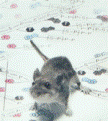Papers in the Biological Sciences

Jay F. Storz Publications
Document Type
Article
Date of this Version
2009
Abstract
Gene duplication is known to play an important role in the evolution of novel protein functions. However, there is still much debate about the evolutionary mechanisms that are responsible for the initial retention and subsequent divergence of newly created gene duplicates (Lynch et al., 2001; Zhang, 2003; Lynch and Katju, 2004; Taylor and Raes, 2004). According to the neofunctionalization (NEOF) model of Ohno (1970), the functional redundancy of duplicated genes entails a relaxation of purifying selection that results in the accumulation of degenerative mutations in one gene copy, while the other duplicate copy continues to perform the essential tasks of the ancestral, single-copy gene. In the vast majority of cases, the redundant gene duplicate will eventually be rendered functionless by inactivating mutations. In a very small minority of cases, the redundant gene may escape this fate by fixing one or more mutations that fortuitously adapt the encoded protein to a new or modified function.


Comments
Published in Heredity 102 (2009), pp. 99–100; doi:10.1038/hdy.2008.114 http://www.nature.com/hdy Copyright © 2009 The Genetics Society; published by Nature Publishing Group. Used by permission.